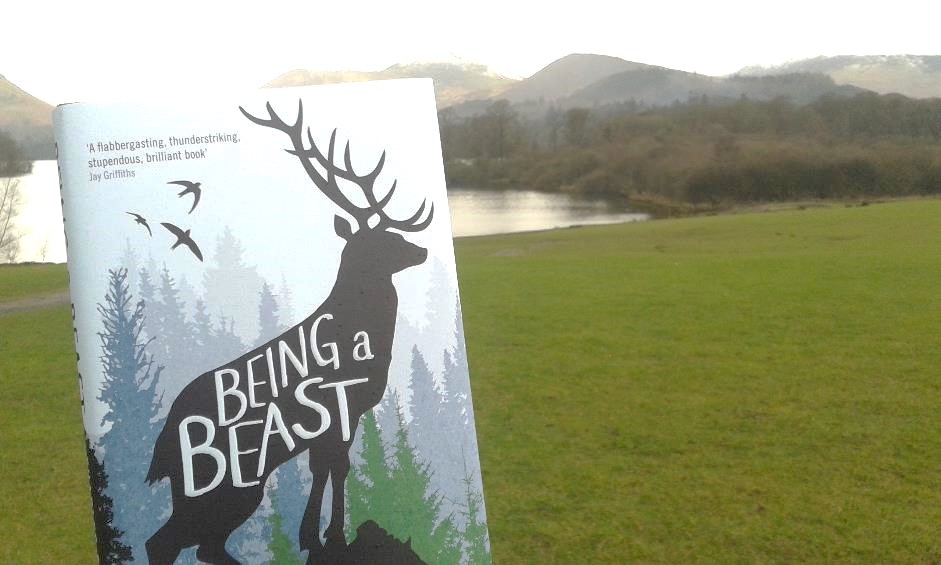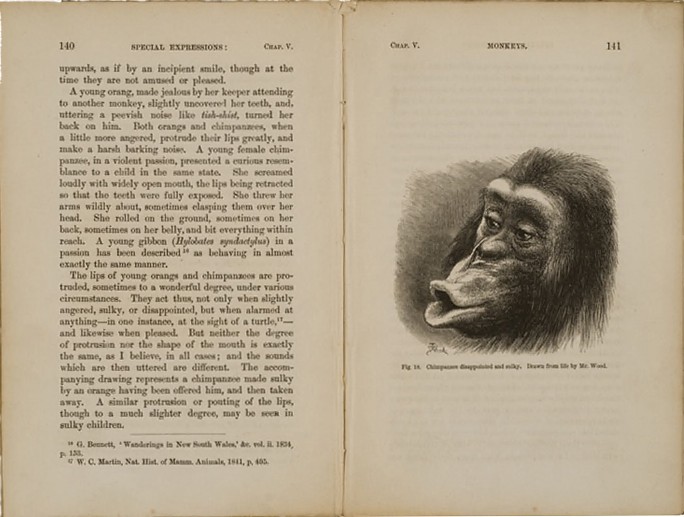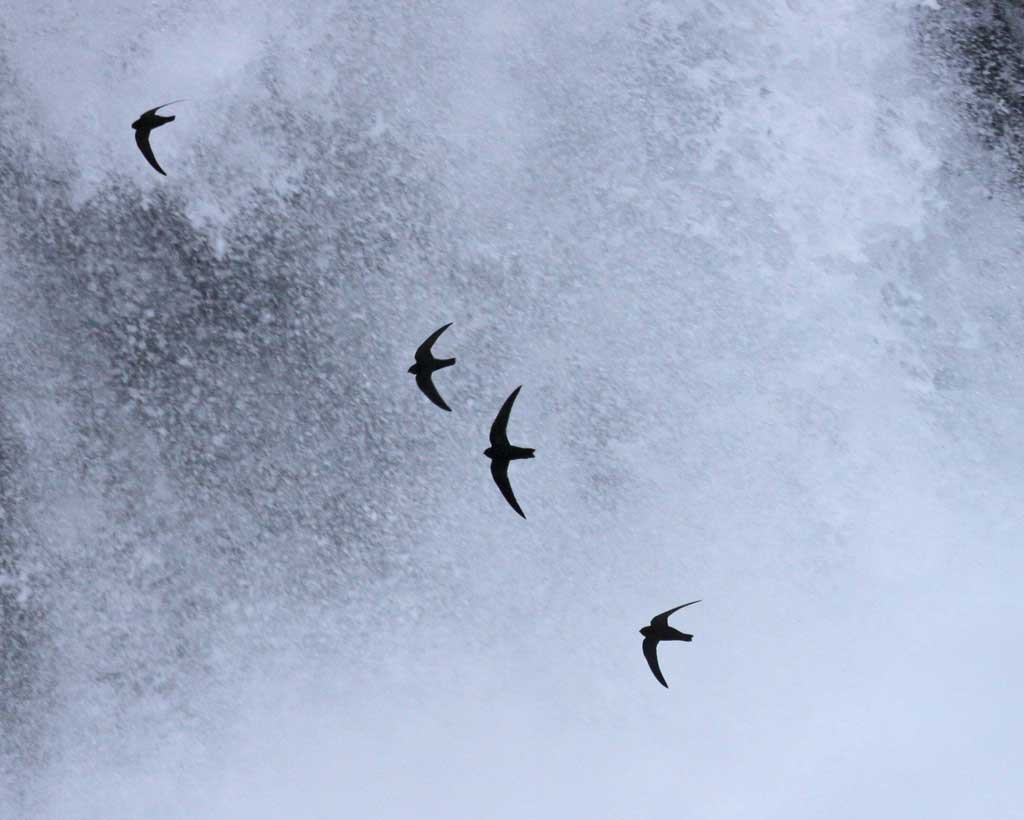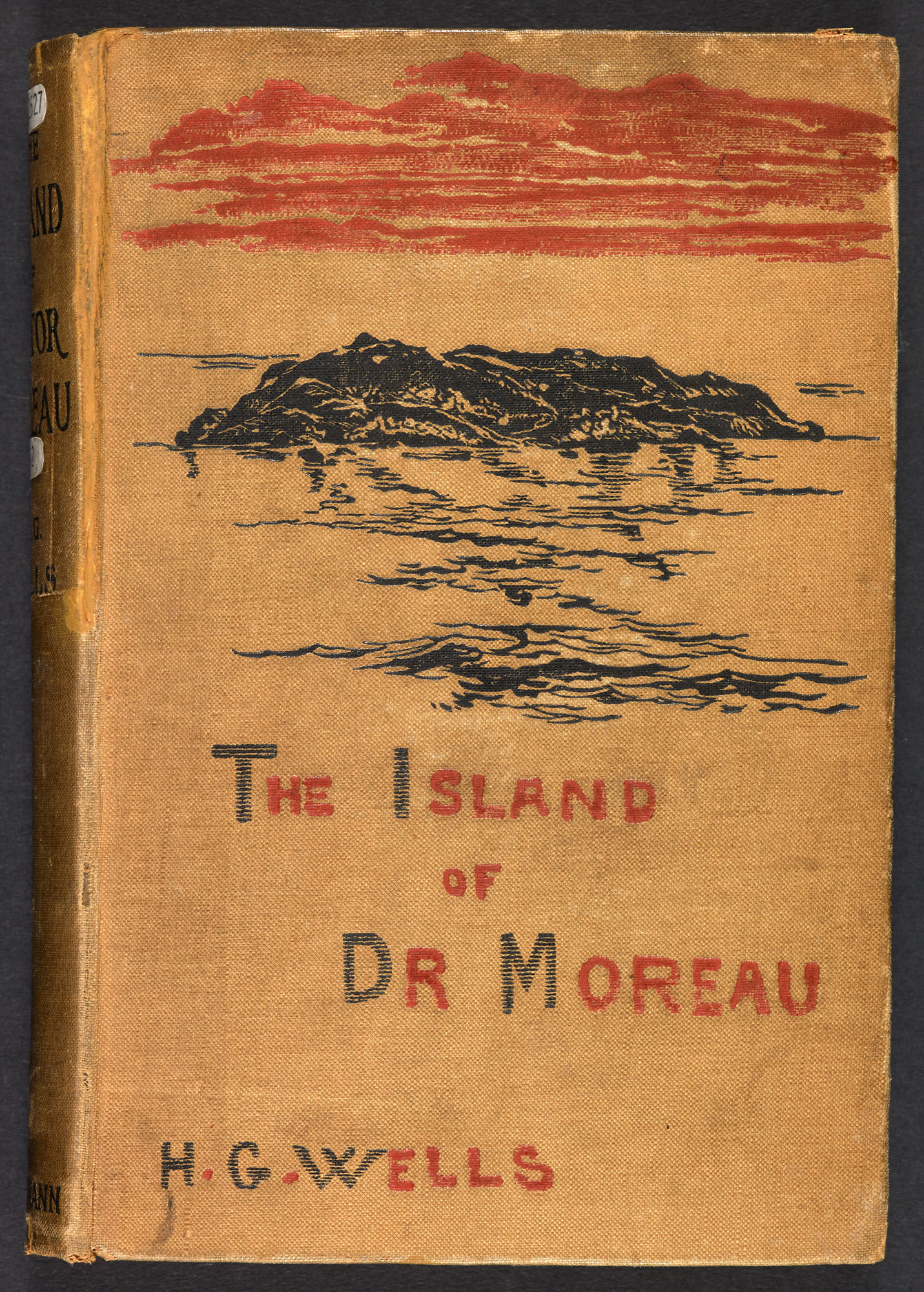A Conversation With Charles Foster
Charles Foster’s Being a Beast (Profile, 2016) is an extraordinary book about the author’s life-long fascination with the minds of animals and his attempts to see the world through their eyes – to feel their sensations, perhaps even think their thoughts. He tries to enter – physically and imaginatively – the worlds of the badger, the otter, the fox, the red deer and the swift. His experiments include living for weeks in a specially made human-sized sett dug into the Welsh hillside; trying to catch fish in his mouth in a Devon stream; scavenging for food among the refuse of East London; being hunted by a blood-hound across Exmoor; and undertaking something between a migration and an ornithological pilgrimage to West Africa.

Being a Beast doesn’t fit into any standard genre. It is part memoir, part natural history, part metaphysics. It is written with incredible intensity, and humour, and ends with an epilogue tackling philosophical questions about identity, agency, authenticity, and otherness. One of the themes of the book is the nature of consciousness, in humans and other animals, and the related question of whether animals experience anything like human emotions.
Charles, whom I heard speak about his book earlier this year, very kindly agreed to answer some questions about it for the History of Emotions Blog.
Thomas Dixon: Your experiments in becoming a beast seem to have been motivated by something like E. M. Forster’s motto “Only connect” – but applied to non-human animals. Did you end up feeling that you had connected and, if so, with what?
Charles Foster: I would prefer to say that I ended up acknowledging that I was connected. The opening line of the book is: ‘I want to know what it is like to be a wild thing’. That is a woefully misconceived line. For, whether I like it or not, I am a wild thing. That’s the (trite) Darwinian truth. My DNA wasn’t forged in a factory. The shape of my psyche was determined by wood, wind and water. Why do we like sitting next to a fire in the winter? It’s not because we see a Dickensian parlour in our sentimental mind’s eye. It’s because our subconscious is happy to know that when the wolf crouched just beyond the light makes its move, we can grab a burning branch and shove it in the wolf’s face.
David Abram points out that there are no non-wild places – just places of relative unwildness. Leave a piece of pie in an inner-city office for a few days, and it’ll be covered with exuberantly wild mould. Your gut is a mass of entirely wild organisms over which you have no control. You depend on their wild fecundity for your thriving and your survival.
So: I am connected to non-human species, whether I like it or not. Many of my defining relationships are with non-human species. We’re much better off noting and accepting the relationships that make us. Nasty things happen if we don’t. Ask Freud.
We have systematically, brutally and disastrously unlearned the languages we need in order to articulate properly our relationships with the non-natural world. The relationships are still there: we’re just painfully constipated when we try to discuss them.
I suspect that all worthwhile knowledge is acquired by anamnesis. And that’s certainly what I was about on the moors and in the woods. I started to unforget my fellowship with the natural world, and unforgot a few words in which to describe that fellowship.
There were moments when old memories flooded in particularly fast. I looked into the eyes of an urban fox. I knew that it knew something about me that I didn’t know, and that it was changed by the encounter. You asked me about connection. Connection entails reciprocity, and that meeting stank muskily of reciprocity.
TD: Was I right in sensing in your book a dissatisfaction with prevailing attitudes in the scientific study of animal behaviour – especially those which refuse to countenance the possibility of animal emotion?
CF: Absolutely. I see lots of scientism, and very little science. The Academy is awash with scientific fundamentalism – offensive mainly because it is fundamentally unscientific. The scientific zeitgeist assumes (just as inflexibly as the Creationists it rightly derides) that there are many non-negotiable axioms. The proper scientific standpoint is that nothing is unthinkable except that one should think something unthinkable. Look at how Rupert Sheldrake has been lynched. It’s like the hounding of Galileo by the Church. This has happened because scientism has become the new Church. Power, of whatever kind, seems to cause sclerosis, and sclerosed brains aren’t good at bending round the contours of a world that is splendidly curvy.

“Chimpanzee disappointed and sulky” – an illustration from Darwin’s Expression of the Emotions in Man and Animals (1872). Image credit: US National Library of Medicine.
When you look at the history of the scientific study of animal emotion, you see irony piled on irony. The militant neo-Darwinists are the mockers-in-chief – yet Darwin himself wrote the foundational monograph on emotions in animals. And the main objection to the proposition that animals may have emotions is the blatantly Creationist one – contrary to all that Darwin told us – that man is fundamentally, unbridgeably different from non-human animals. Of course in many important respects humans are different, but there’s no evidence to suggest that animals don’t have emotions, and a large amount of evidence that they do.
One factor that’s important in the unsceptical scepticism of modern scientists about animal emotions is the tyranny of the metaphor of the computer. It’s the only metaphor that most biologists have, and any idea that can’t be shoehorned into it is assumed to have no place in the natural world. The reasoning therefore goes: ‘1. Animals are like computers. 2. Computers don’t have emotions. 3. Therefore animals don’t have emotions.’ The argument is beyond parody.
TD: So, do you think that animals experience emotions like ours?
CF: I don’t know. But my non-knowledge is of the same kind that would force me to say that I don’t know whether you experience emotions like mine. Of course I have rather less doubt about my knowledge of your emotions than about my knowledge of a badger’s, but the epistemological worries relating to both enquiries are substantively the same. What a tortured academic answer! Sorry. I expect they do. I would be less surprised if they did than if they didn’t.
TD: I know that you trained as a veterinary surgeon before branching out into law and ethics. Did that experience give you insights into the emotional and sensory worlds of animals too?
CF: Quite the opposite, I think. I’d have written a much better book had I not been marinated in science. Jonathan Sacks observes that science takes things apart to find out how they work, and religion puts things together to find out what they mean. An inquiry (or at least a readable inquiry) into the emotional worlds of animals is much more like a religious than a scientific quest.
Children don’t have categories like ‘scientific’ or ‘religious’. They’re much better integrated than we are. For them, how something works and what something means are not two different categories. As I describe in the book, I started wondering, as a very young child, how animals perceive and relate emotionally to the world. I thought that one way of trying to find out was to take animals apart. So I did. I cut up animals I found dead on the roads. I pickled their brains, put them in jars, and clutched them as I went to sleep, hoping that something of their understanding would seep into me. It sounds perverted, but any shaman would mutter: ‘Yes, yes: a standard technique.’ If I’d continued along that path I’d have taken fewer wrong turnings. But I grew up, up, up and away from the land on which the creatures crawled, and away from sensation, and away from the mind-body-spirit unities in the hutch in the back garden, and into an adult world where ‘how something works’ and ‘what something means’ were very different, and had to be approached using very different tools. The tool of intuition was denigrated: that was for the thick kids who did art. If you could, you did science: you dissected, and so lost sight of the whole, and of the whole idea of meaning.
I’ve never recovered. I never will. It meant that I had to start my journey into the heads of the various animals not in the rivers and forests, but in the library. I had to start with abstractions such as ‘nerve membrane depolarization’, and argue towards real things like dung and dislocated necks. It was the wrong way round. Good science and good literature and good ethics all start on the ground and justify their abstractions and their generalisations laboriously and apologetically.
TD: Your children feature in several places in the book and took part in some of your experiments. Do you think that children are closer to animal nature than adults, and if so is that anything to do with having shared emotions?
CF: They are certainly closer. There are some obvious ways in which this is true. They are physically closer to the ground. The distance between their eyes, noses and ears and the ground is much closer than mine to that of a fox. Their senses are less atrophied than ours – and hence closer to the senses of animals. They don’t have our arrogant anthropocentrism: they talk to animals as if they are their peers rather than their prey. Children are much less in thrall to cognition – and hence abstraction – than I am. When I walk through a wood I can’t see the leaves or hear the birdsong. I see only the abstraction of the leaves: I hear only the hiss of cognitive tinnitus. And those are far, far less interesting than the real leaves and the real birdsong. My wilderness is achingly self-reverential. My descriptions of the wild are essentially onanistic. But children see the leaves and hear the birdsong. And there is plainly some connection between some physical sensations and some emotions.
Having said that I can’t be sure about the nature or content of animal emotions, I need to be consistent and say that it follows that I can’t say that children share emotions with animals. But it seems to me to be highly likely. For animals too (I presume) see the real leaves and hear the real birdsong. It’s only 30 million years or so since my children shared a common ancestor with badgers. They share most of their neurological hardware with badgers now. If both experience emotions, and both are sensing the same thing, surely it’s more likely than not that they both children and animals react in a similar emotional way to their perception of those same things? Of course there will be many very important differences: the smell of an earthworm means something very, very different to a badger than to my son Tom, who’ll get pasta in the evening from his adoring parents. But I’d have thought that there would be some convergence of emotions on at least some things in the wood.
TD: One recurring theme of the book is the idea that animals live in closer proximity to death than we do, and you write about how that might feel, including your own sensations when lying in your sett, imagining being returned to the cold, wormy earth after death. I was put in mind of the book of Ecclesiastes: “For the fate of the sons of men and the fate of the beasts is the same; as one dies, so dies the other. They all have the same breath, and man has no advantage over the beasts; for all is vanity. All go to one place; all are from the dust, and all turn to dust again.” Did your experiments in living like a beast change your thoughts or feelings about death?
CF: They should have done, shouldn’t they? Other people say that as they’ve got more ecological – recognised their own place in the wheel of life (including their role as a piece of food) – they’ve become reconciled to their own deaths. I understand and admire that position, but I can’t share it. Perhaps that’s because my ego is pathologically inflated, and the thought of it being dissolved, or reallocated, or at best having to exist in new circumstances, is uncomfortable. There is, though, some comfort in the thought of solidarity with all the other doomed creatures on earth. Partly this is the thought that nothing has any lasting advantage over me – that the most vibrantly alive swift will join me in the darkness, or the light, or wherever. I suppose that this is the same sort of comfort that some people get from the notion of the communion of the saints.

Black swifts. Image: Glen Tepke/VIREO.
TD: Before we finish I have to ask you whether you’re a fan of The Island of Dr Moreau by H. G. Wells. It’s a favourite of mine, and I thought about Moreau (a mad scientist figure who also personifies the cruel process of evolution) and his “beast folk”, when I was reading your book. In particular I remembered Moreau’s haunting fear that as soon as his work in creating his beast people is done, they begin to “revert” and the beast to creep back in. Then, when the narrator, Prendick, returns from the bizarre world of Moreau to England, he sees everywhere the beast-like behaviour of his compatriots, and devotes himself to the intellectual study of chemistry and astronomy, partly to get as far away as possible from the animal within:

The Island of Dr Moreau (1895). Image: British Library.
“There is, though I do not know how there is or why there is, a sense of infinite peace and protection in the glittering hosts of heaven. There it must be, I think, in the vast and eternal laws of matter, and not in the daily cares and sins and troubles of men, that whatever is more than animal within us must find it solace and its hope.”
But I suspect your own conclusions on returning from the world of the beast folk might be different.
CF: I used to read a lot of H.G. Wells, and know Dr. Moreau well. But Wells now seems to me to be suffocatingly metropolitan. None of his ideas works outside Bloomsbury. Your citation is a case in point. He’s really, despite his vaunted secularism, an enthusiastic Genesis 1 subduer of the things that creep and crawl on the face on the earth. For him, the more a man subdues the wild, the more of a man he (and it always is he) is. We’re back where we came in: Wells and you and I are wild creatures, and we’re better off if we learn to live with it. You can’t subdue it either out there or in you. It doesn’t need to be subdued: it is kind.
You can read more about Charles’s book and forthcoming appearances on his website, and follow him on Twitter.
Read more articles about emotional animals on the History of Emotions blog.
